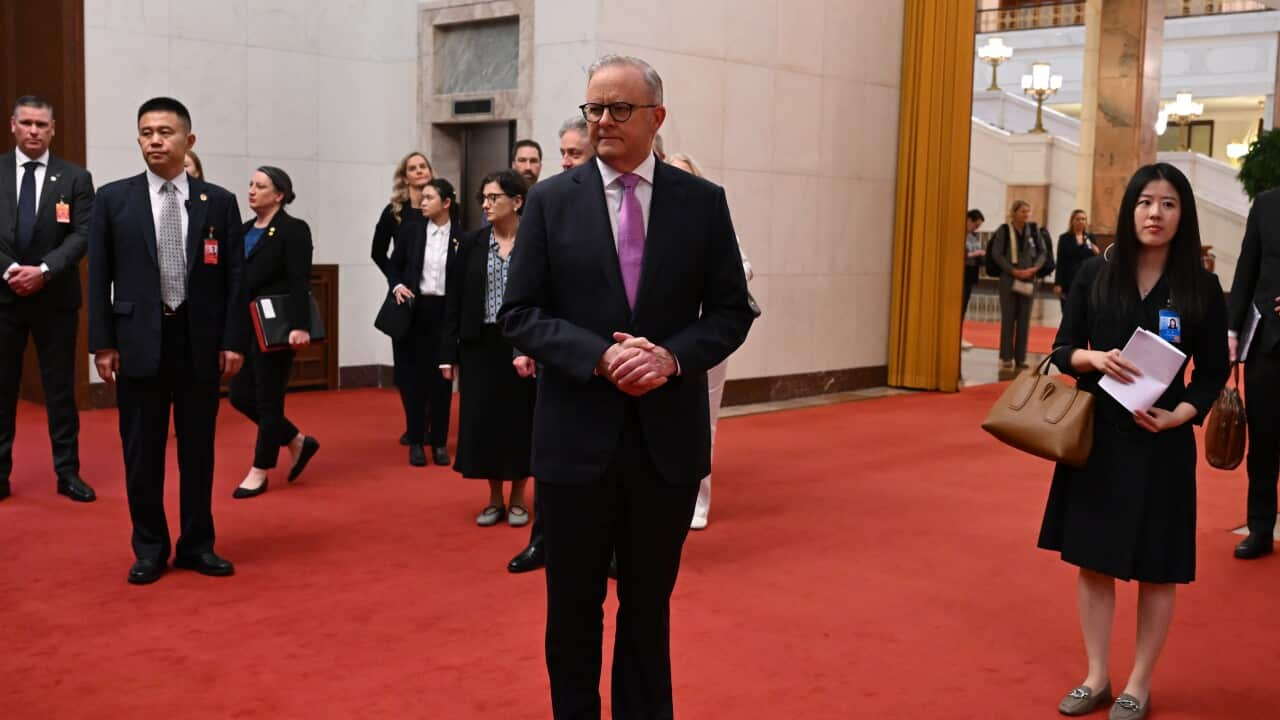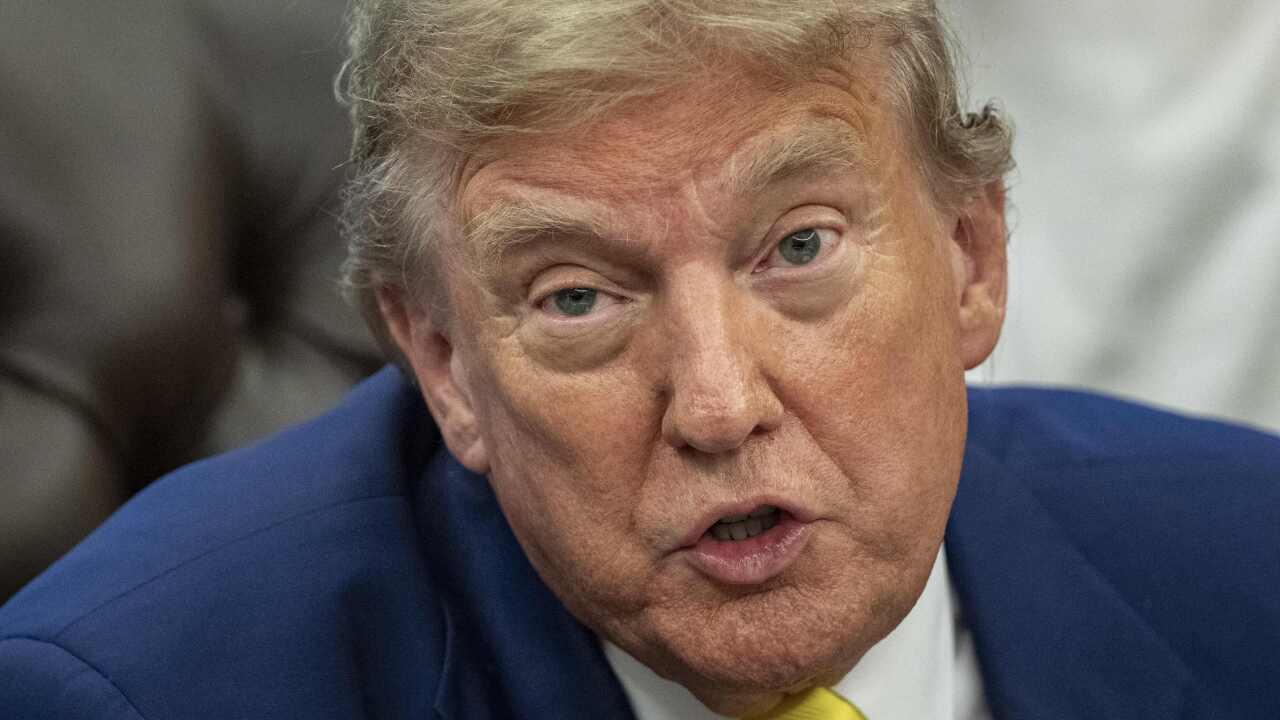China is leading the development race in Southeast Asia as traditional donors like the United States and the United Kingdom step away from the region, according to a new Lowy Institute report.
The third edition of the Southeast Asia Aid Map shows China increased its regional development spend in 2023 for the first time in three years.
Grace Stanhope, a research associate at the Lowy Institute, said: "The lack of Western and European money going into Southeast Asia is a real problem."
"We're projecting a 20 per cent drop in bilateral foreign aid to the region by 2026," she said.
China favours infrastructure, loans
After reducing its annual Southeast Asian development spend by 68 per cent over five years, China boosted its financing in 2023.
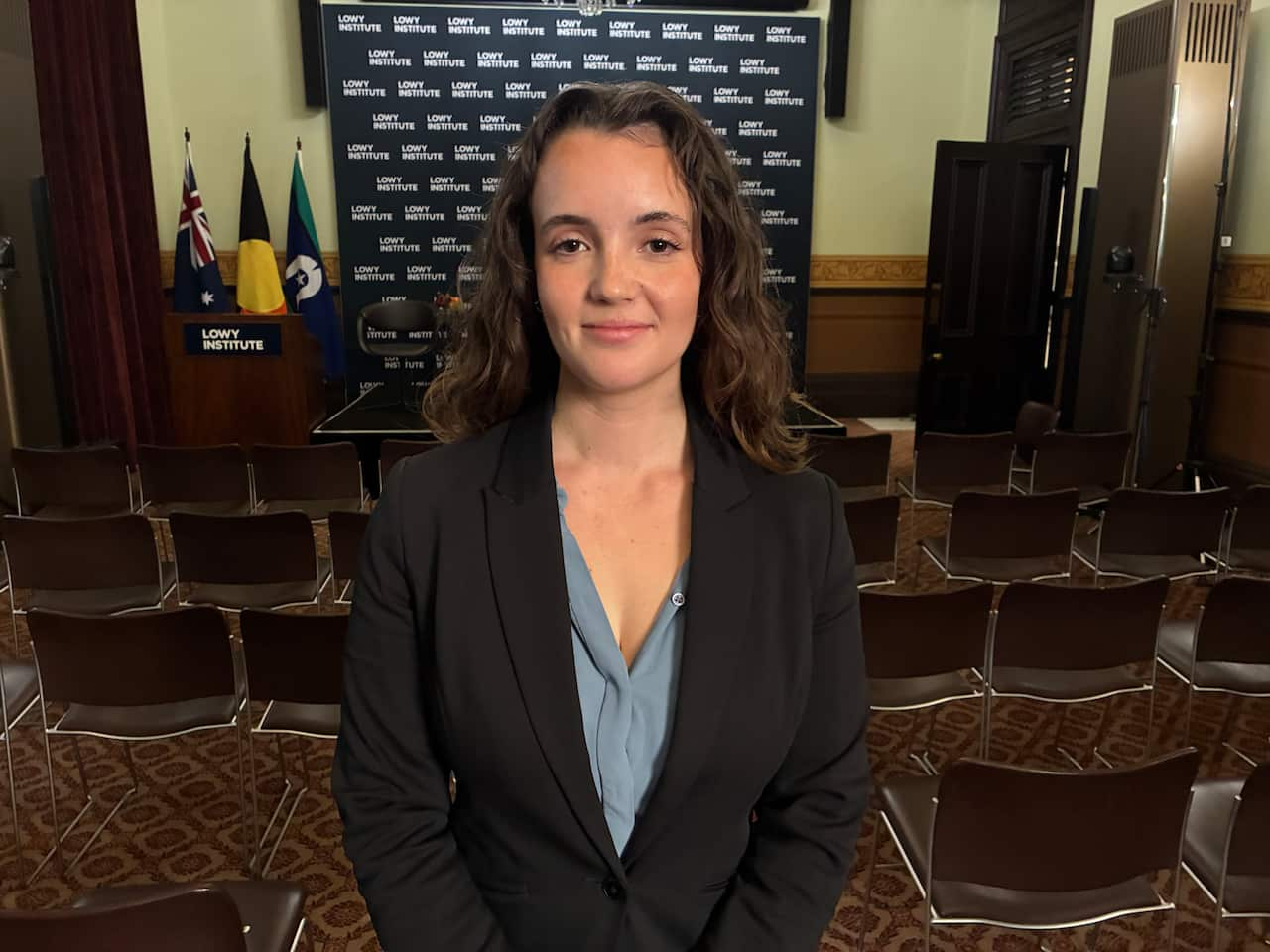
Source: Supplied
China is on track to overtake traditional partners in infrastructure spending, quadrupling its commitments from 2022 to 2023 through the revival of the Kyaukphyu Deep Sea Port Project in Myanmar.
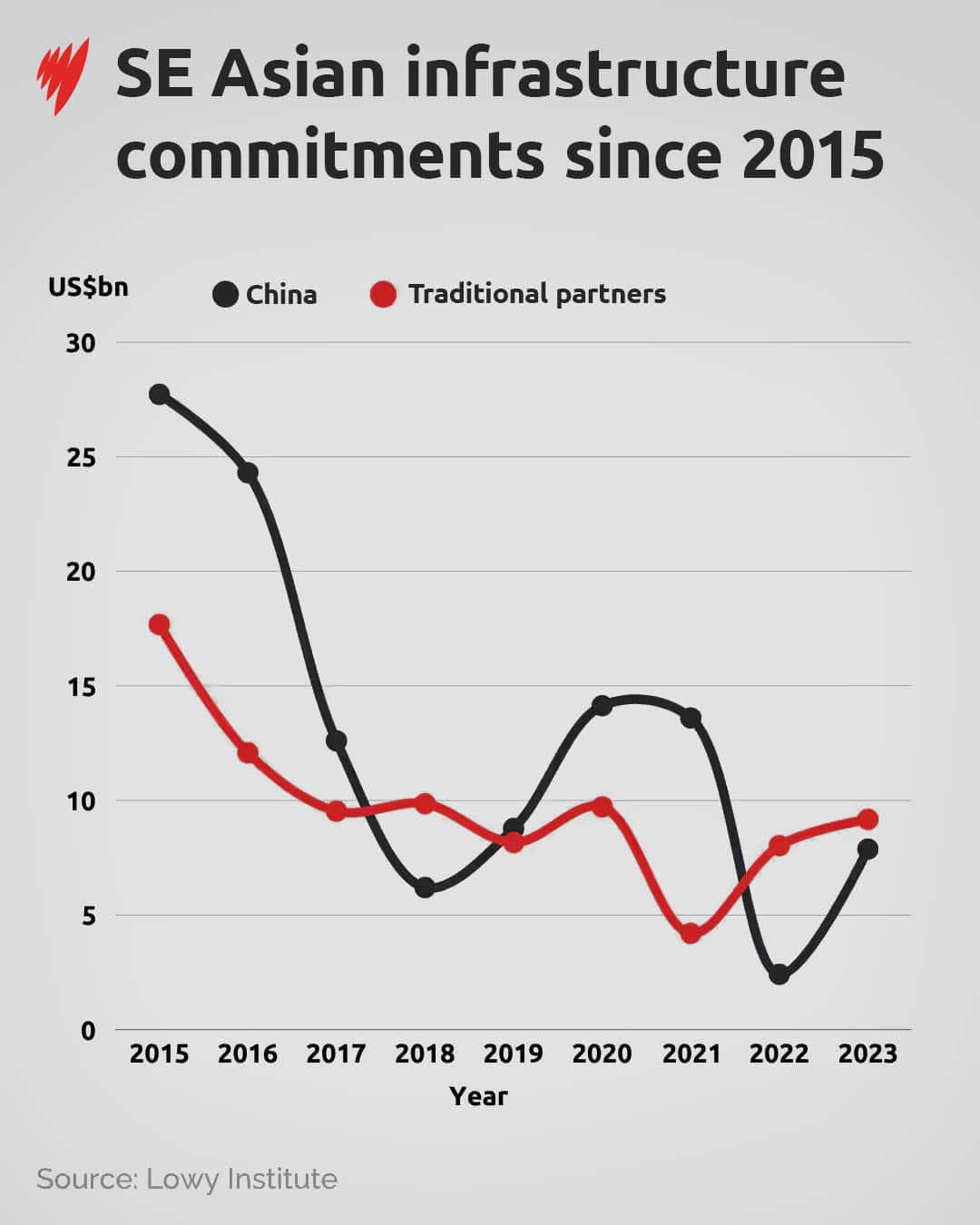
Infrastructure spending commitments by both China and traditional partners to Southeast Asian nations have decreased since 2015. Source: SBS News
"These countries have far less options in terms of other development providers, and also far higher development needs," Stanhope said.
"Increasingly, these countries have little room to manoeuvre in their negotiations."
Stanhope warns reduced competition could lead to less domestic scrutiny of China's funding.
"I think we can expect to see less pressure for reform in terms of China's development finance offering if there are no viable alternatives," she said.
Most countries in the Indo-Pacific region have avoided high debt burdens taken on by other developing countries. Globally, a third of developing nations spend more on interest repayments than on health each year.
Melissa Conley Tyler, executive director at the Asia Pacific Development Diplomacy and Defence Dialogue, said: "We don't want countries in the Indo-Pacific to be heavily indebted."
"That's a huge problem if countries can't provide the services that they need to their citizens because they're paying back debt," she said.
Further cuts expected
The full impact of aid cuts is yet to be seen in the region.
The US slashed its aid spend by more than 80 per cent this year, while the UK plans to redirect billions in foreign assistance towards its defence budget.
The Lowy Institute says that will result in the "centre of gravity" shifting in Southeast Asian development financing.
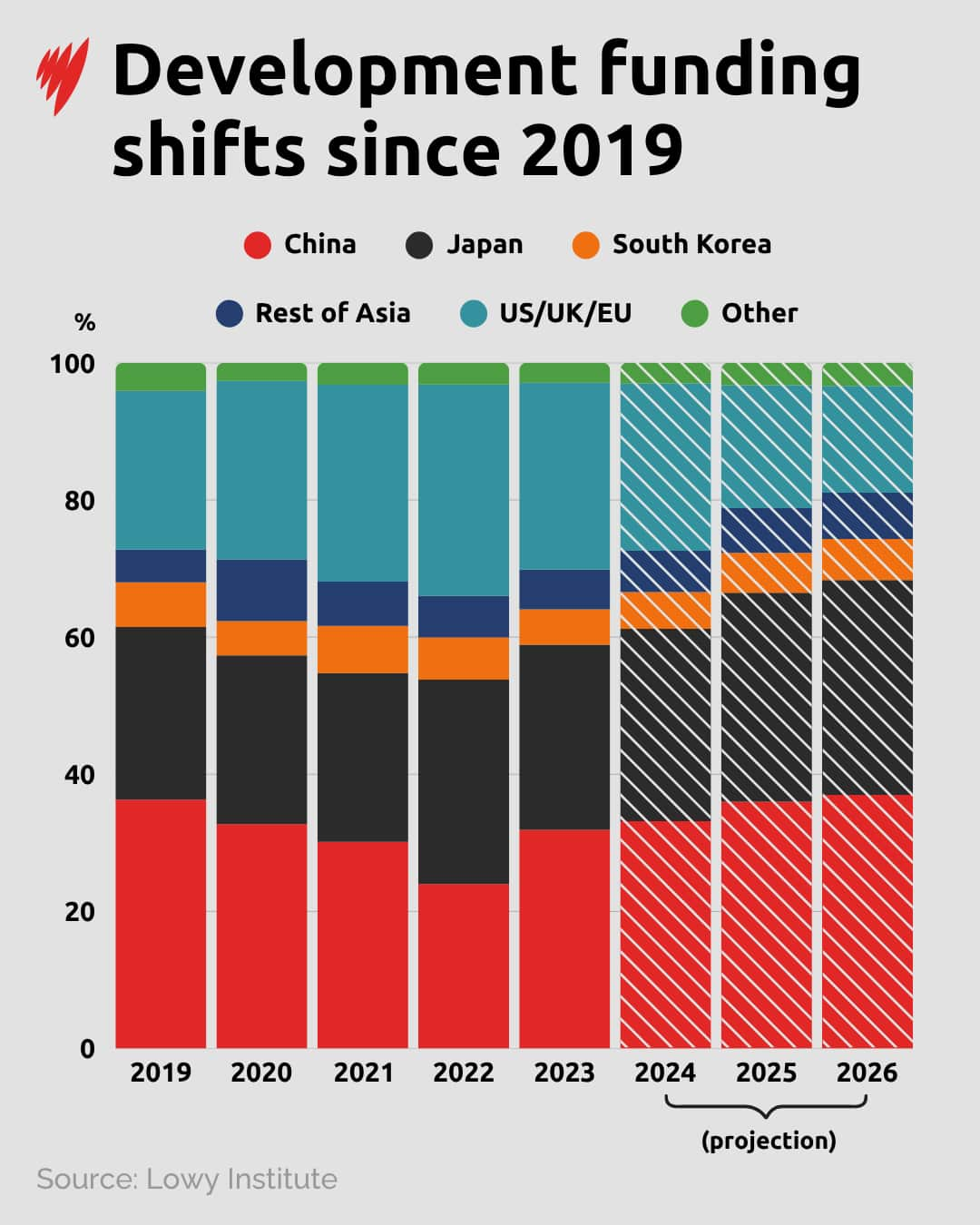
A bar chart shows the shifts in development funding from various nations since 2019. Source: SBS News
Australia's response
Australia increased its aid to Southeast Asia in 2023, with Labor committed to raising its international assistance budget annually in line with inflation.
Speaking after the ASEAN Leaders Summit earlier this month, Foreign Minister Penny Wong said Australia had "sought to pivot our aid to the [Indo-Pacific] region" in response to recent cuts.
"Some 75 cents in every dollar that Australia provides in development assistance is directed to our broader region," Wong said. "We will continue to prioritise that."
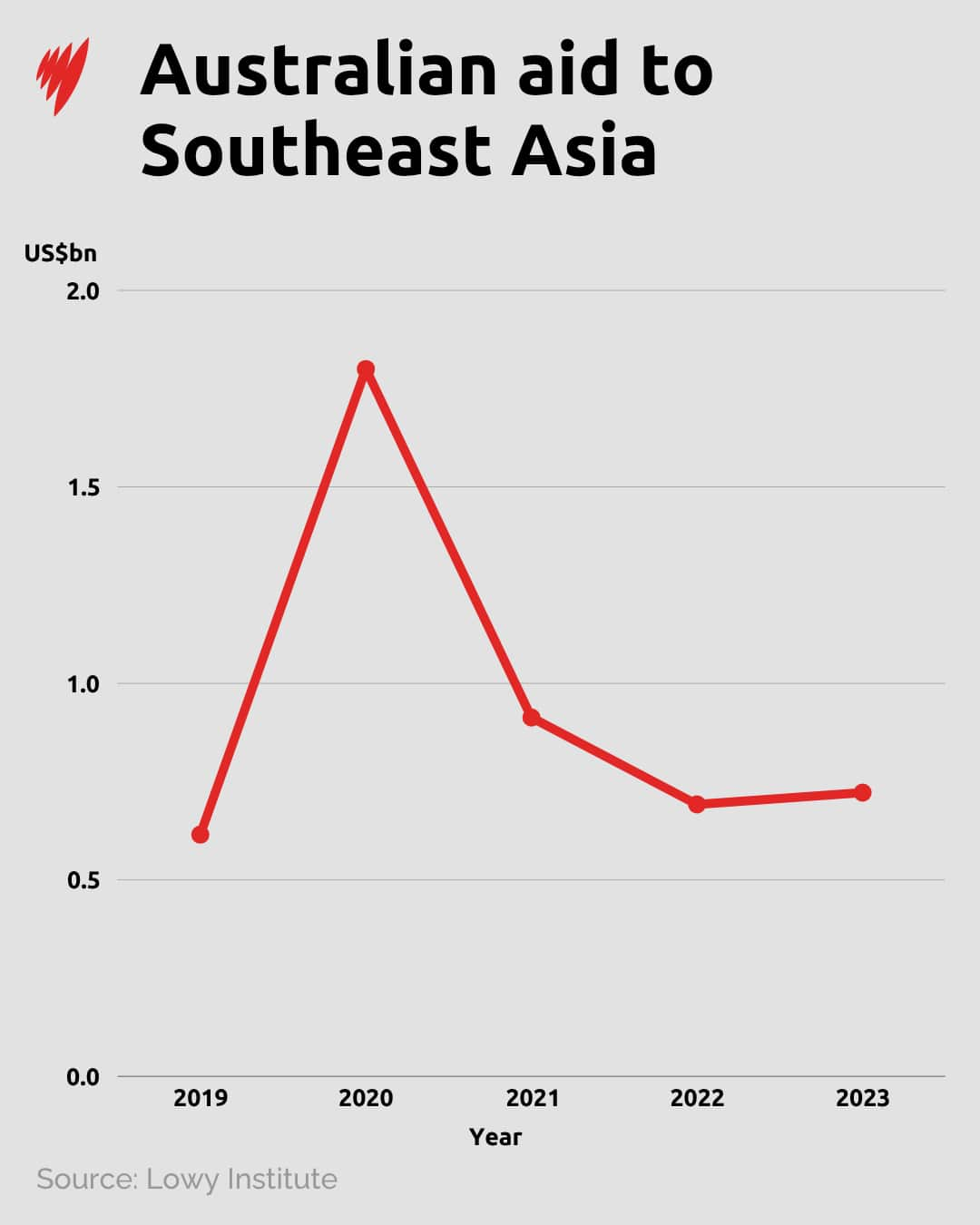
Source: SBS News
"If you have a pandemic or animal diseases, if you have climate migration, all of those things are going to matter greatly to Australia.
"We would, of course, prefer to live in a region that is secure and stable and prosperous. And so the money we put into things like our development assistance is helping on our national interest in that."
Share
